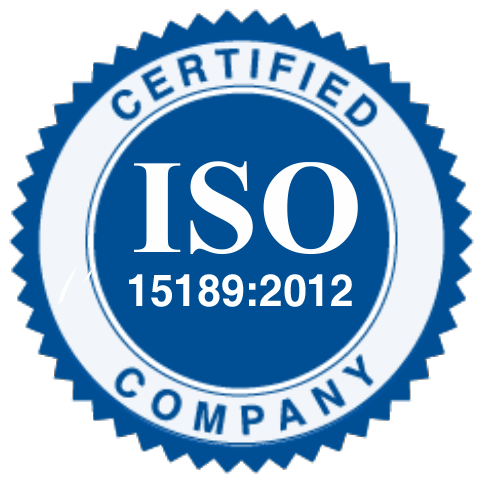ISO 15189:2012 (Rs.5000/-)
ISO 15189:2015 - Medical Laboratories Requirements for Quality and Competence
» ISO consulting services require organizations to help establish a complete quality management system that meets all the requirements of ISO 15189.» ISO consulting services can create a quality management system that can prepare organizations with a robust system for producing quality products and services.
» ISO consultants help comply with Annex SL, part 1 of the ISO / IEC Directive, describing the writing of the ISO Management System Standard (MSS). »Which meets the requirements of ISO 15189.
» The Good ISO Consulting firm trains senior managers to promote risk-based thinking, process approaches and continuous improvement. »ISO consultants help develop a comprehensive and simplified quality management system that meets all the requirements of ISO 15189 and the Stage 1 audit requirements of third-party certification bodies. Phase 1 auditing of certification bodies varies according to the certification bodies selected, which makes it possible to verify whether the documented system meets all of the requirements of ISO 15189.
» An ISO 15189 consulting firm provides implementation techniques and trains the organization's internal auditors to acquire the skills required to conduct internal audits or to provide ISO internal audit services for auditing all processes. Requirements of ISO 15189 and effective application of ISO 15189 »Internal quality audit facilities performed by ISO consultants help to detect any deficiencies in their implementation that are not usually found in internal audits of organizations.
»ISO consulting firms help organizations effectively control information in management-related documents (documents and records) by organizing ISO management review meetings on all entry elements of a management review (to the requirements of ISO 15189 according).
» Internal audit results are fully taken into account, incorporating trends to be monitored, identification / evaluation / mitigation of risk activities, root cause, analysis fully implemented, corrective action initiated Is done and an improvement is realized continuously.
The benefits of implementing the ISO 15189: 2012 management system are diverse and will be visible in all departments of your company. Here are some benefits to consider:
» An ISO 15189: 2012 certification promotes the development of an international reputation for your organization through quality assurance and management systems.» Promotes a high degree of sustainability in respecting medical laboratories and the laws of law, both from an international and national point of view.
» ISO 15189: 2012 certification helps improve productivity and quality
» ISO 15189 certification; 2012 is a powerful marketing tool that will make your organization globally recognized in the long run.
» ISO 15189: 2012 certification helps improve business opportunities
» ISO 15189: 2012 certification enhances consumer confidence through problem solving and continuous improvement
» ISO internal audit is an effective management tool for managing any business that takes into account "cash quote" processes to build consumer confidence.
» ISO 15189: 2012 certification is necessary to promote laboratory efficiency and accountability for better results and better service delivery.
» The ISO 15189: 2012 certification program has also played an important role in promoting modern laboratory practices, including professionalism and expertise in conducting medical activities in laboratories.
» ISO 15189: 2012 certification has ultimately helped to increase customer satisfaction in organizations involved in medical laboratory testing.
» The lab provides an opportunity to exchange external views on practices, unnecessary duplication of performance information collection that can often be required by regulatory bodies encourages sharing of best practices, reduces risk and Ensures international recognition.
» Provides independent assurance of quality and safety, provides a mechanism for quality improvement, promotes uniformity of quality of care, encourages innovation
» Continuity in quality of care, advanced technologies and processes and techniques reflect current best practices. The employee providing the service is competent to perform the tasks he performs
